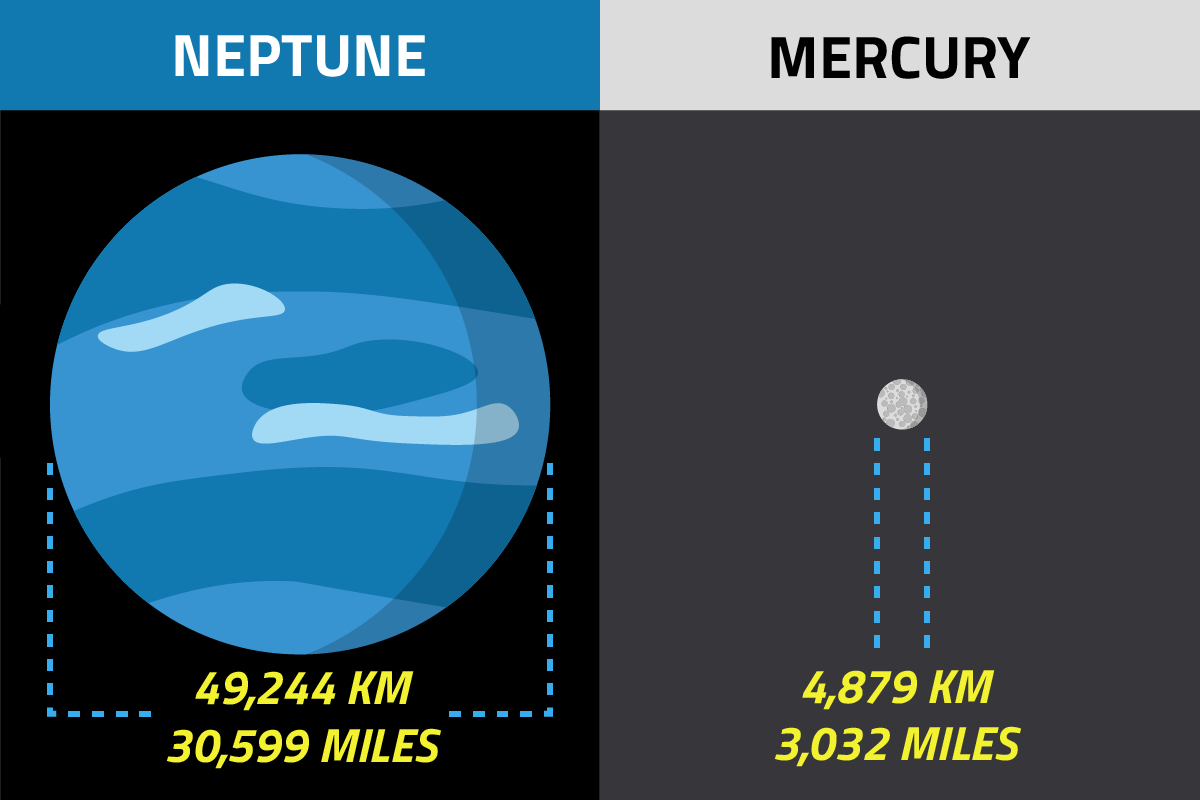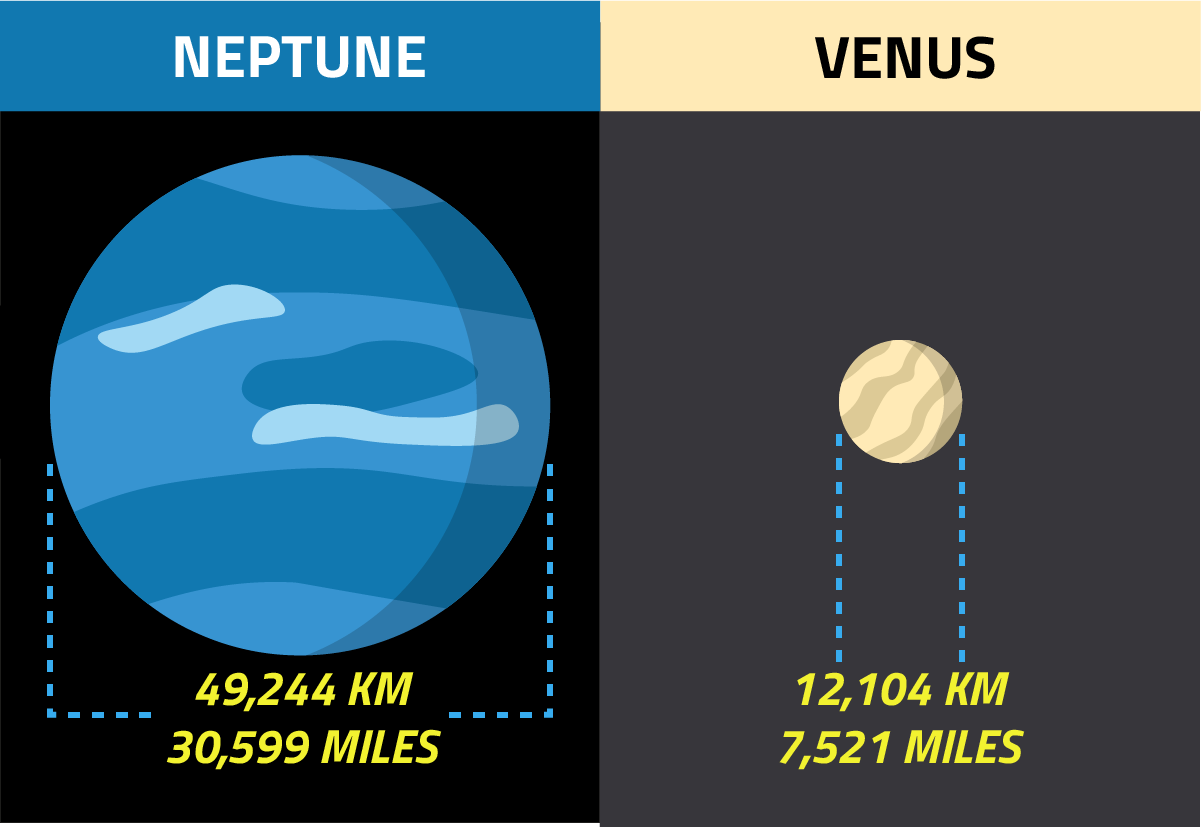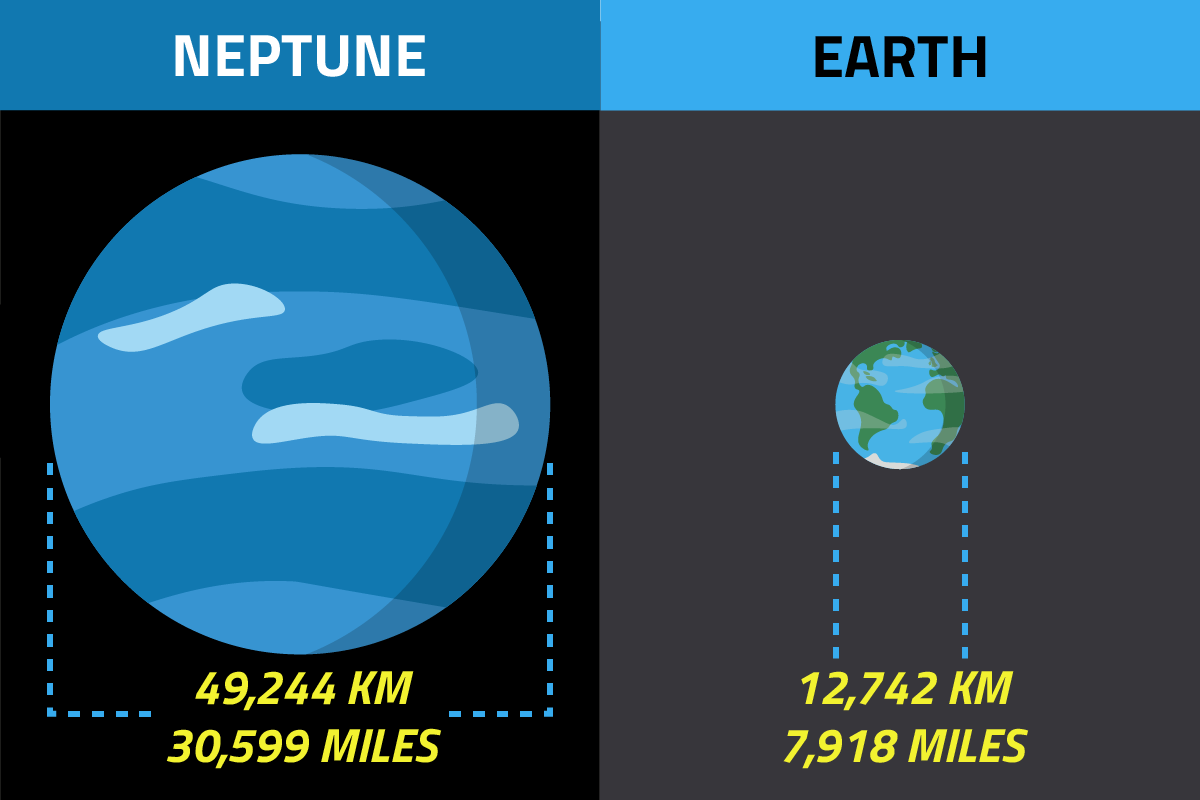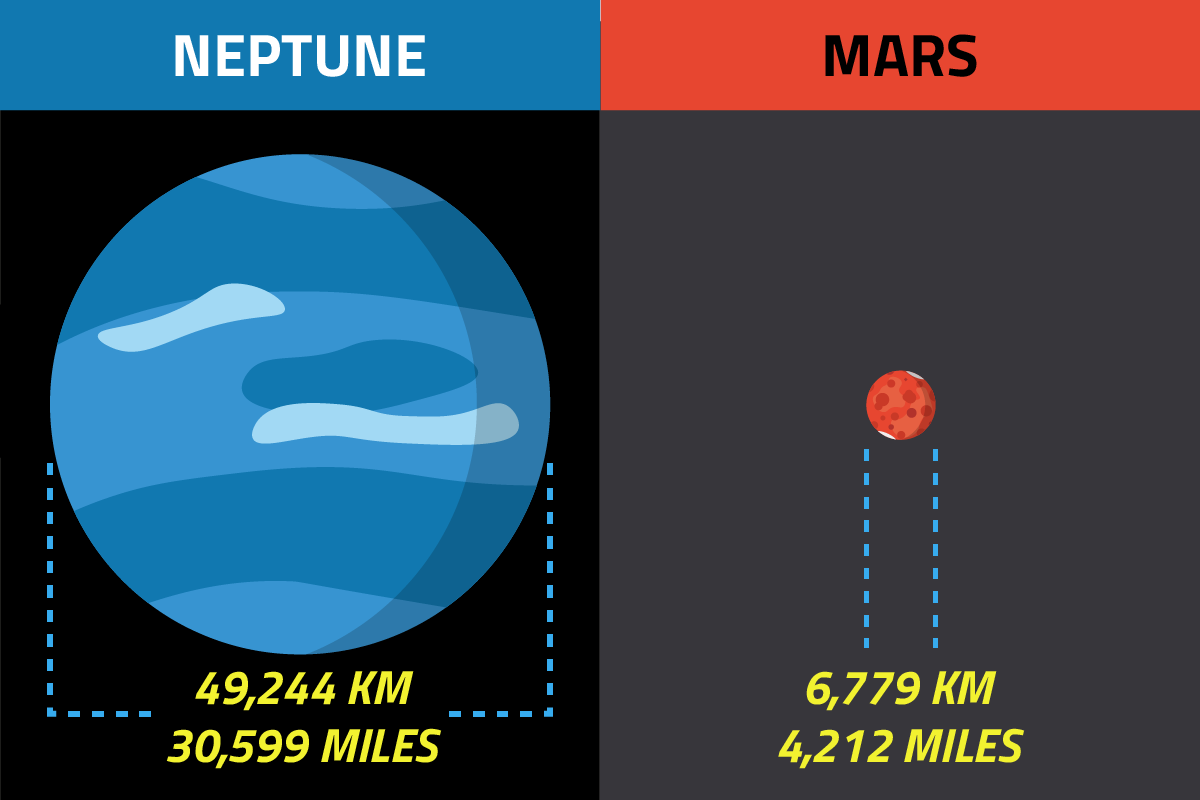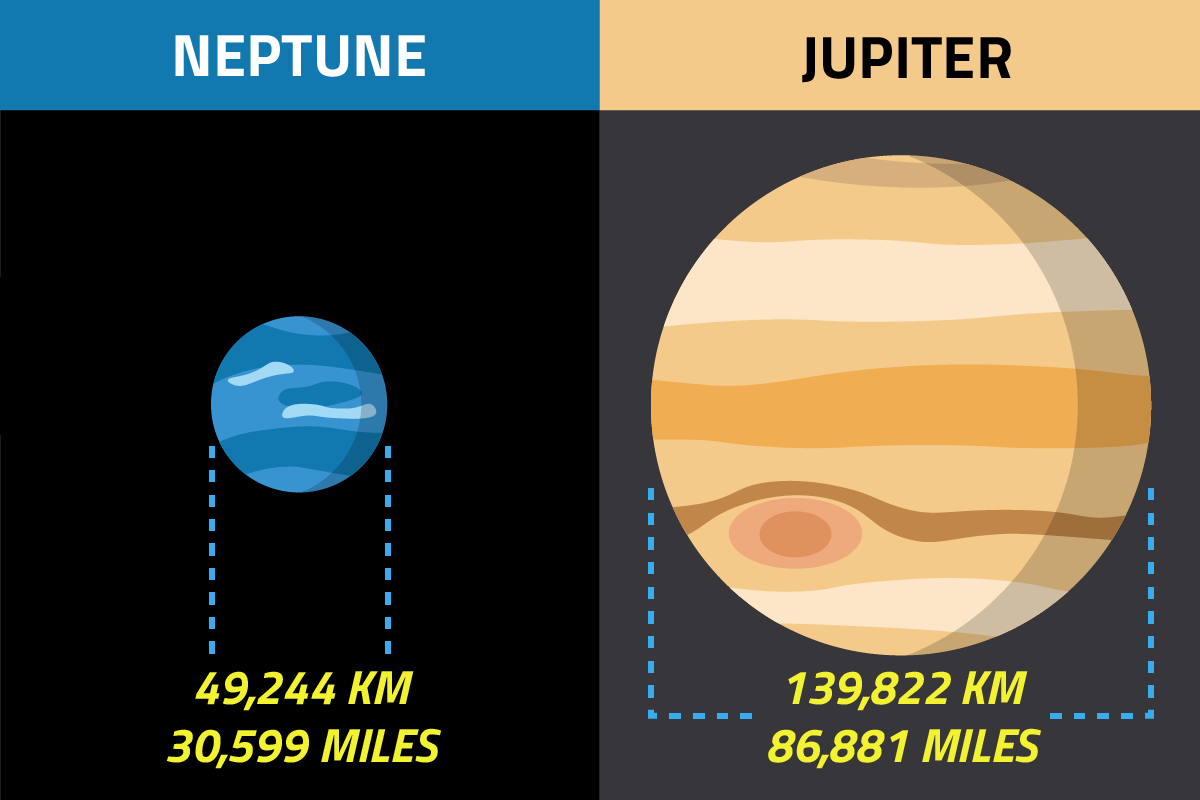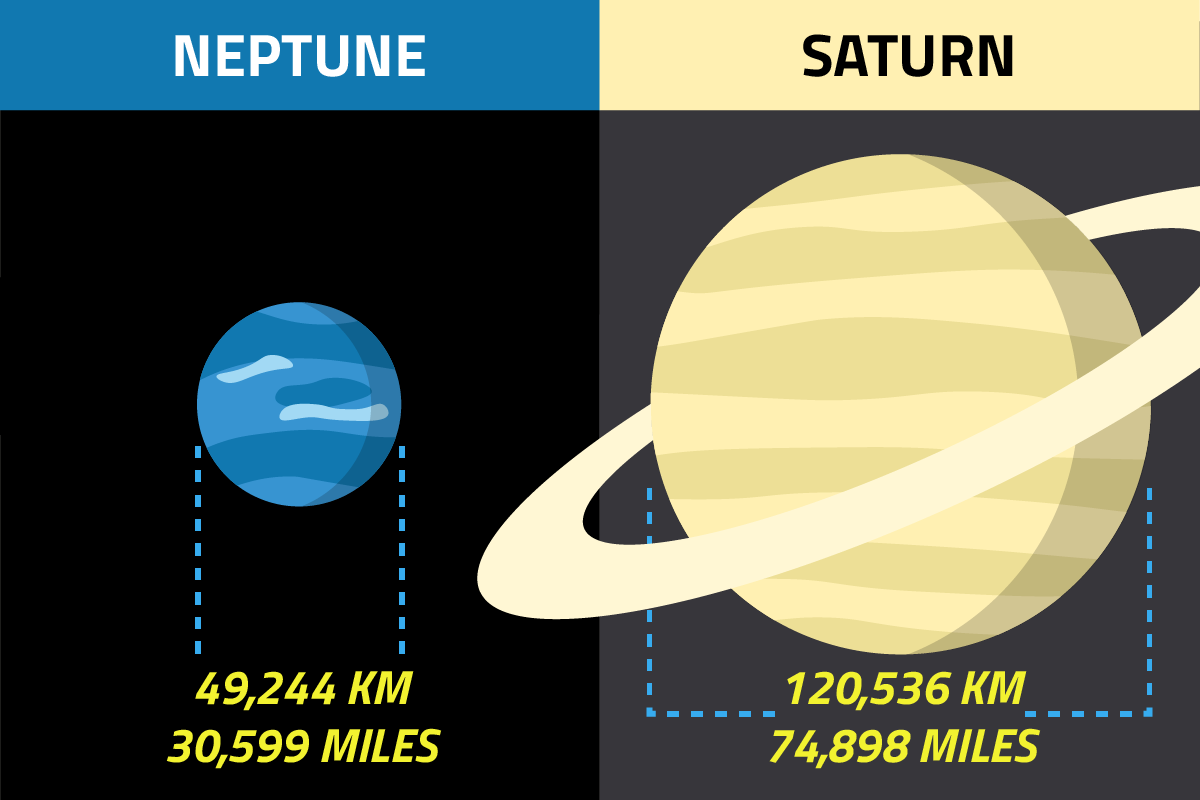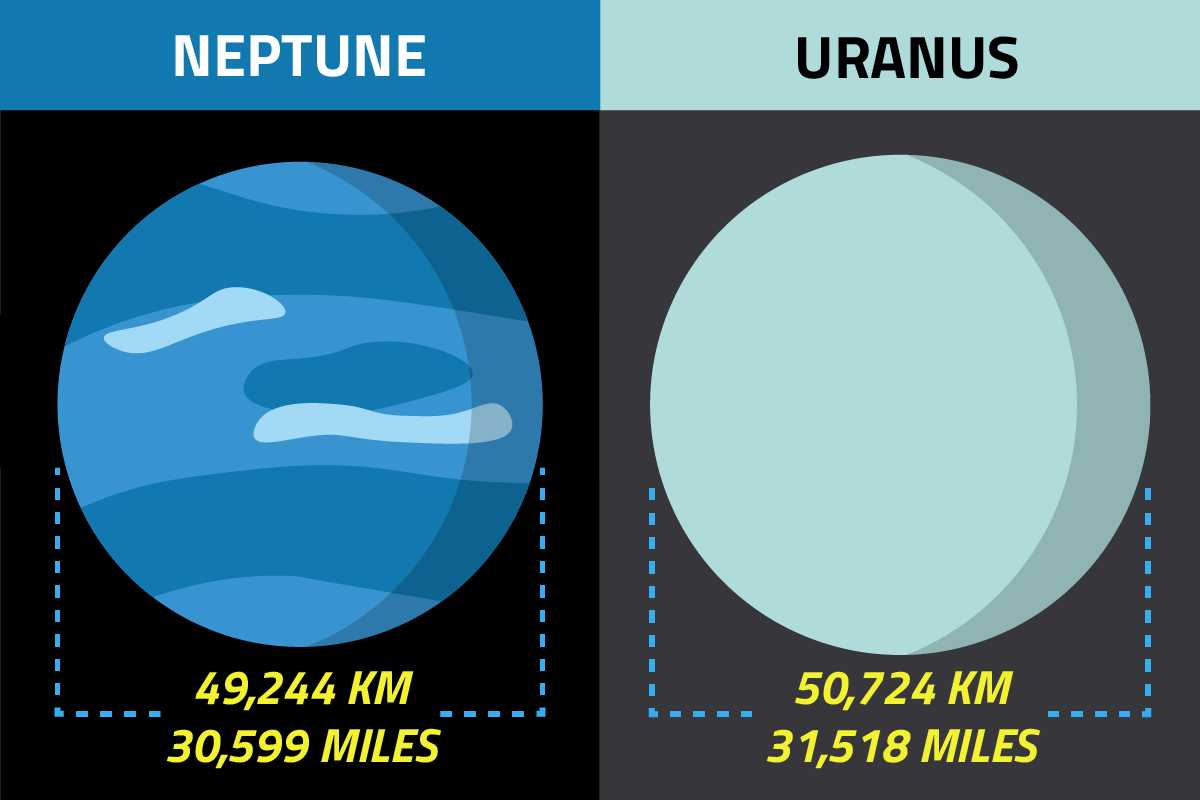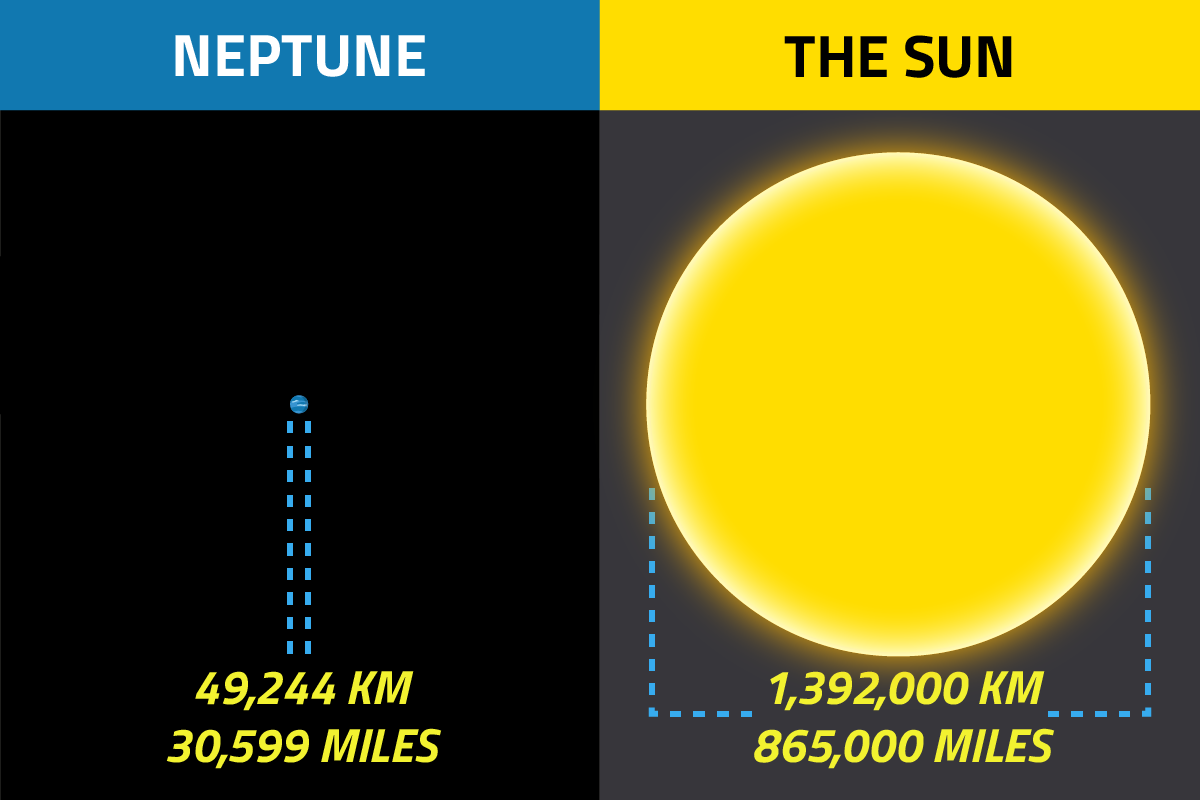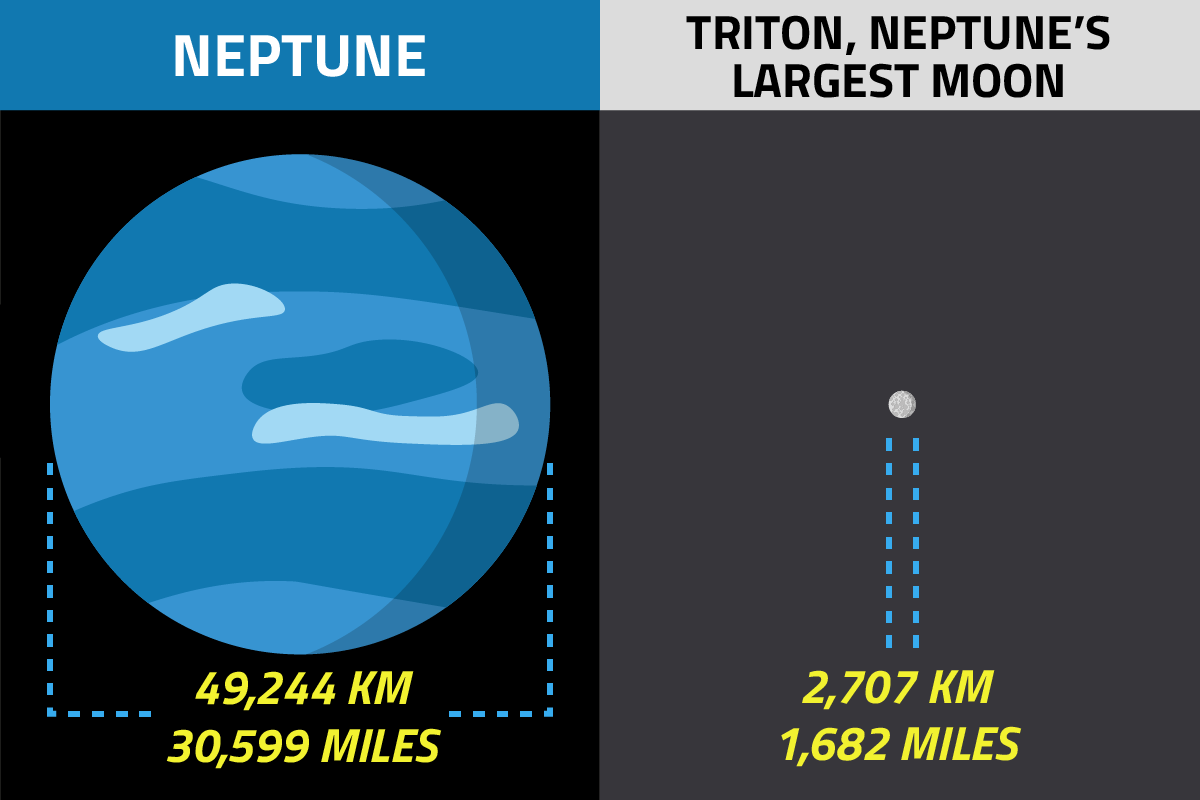Welcome to Neptune!
The most distant of the eight planets is Neptune, a large blue world made mostly of gas, ice and liquids orbiting 4.5 billion kilometres (2.8 billion miles) from the Sun. Neptune is so far away that it is only visible with the help of telescopes or binoculars. It is slightly smaller than its neighbour Uranus. Neptune was discovered in 1846 after astronomers noticed that something was affecting the orbit of Uranus. They predicted that the likely culprit was a planet, and they correctly calculated where that planet would be situated. When astronomers looked in that place on 23rd September 1846, they found Neptune!
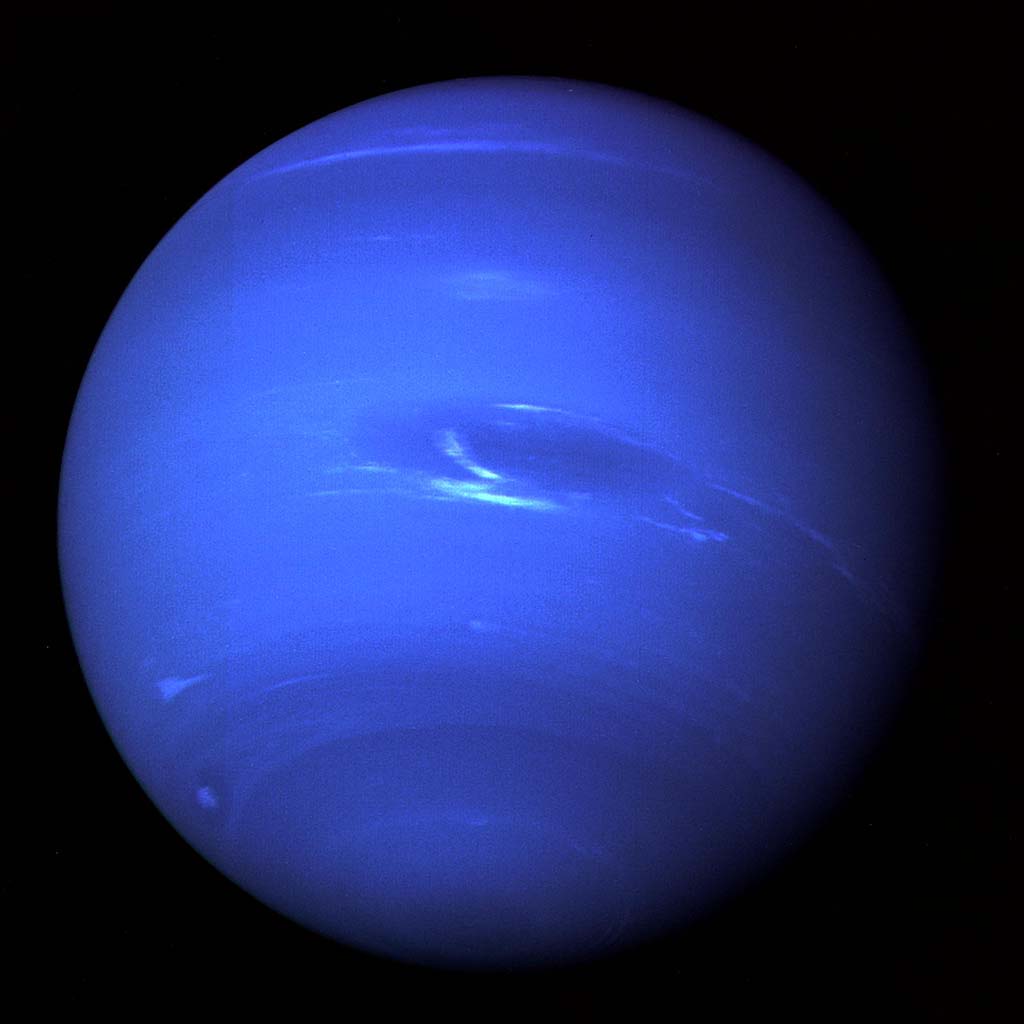 Neptune from Voyager 2 in 1989, courtesy of NASA/JPL
Neptune from Voyager 2 in 1989, courtesy of NASA/JPL
2,793,099,927 miles
30.05 A.U.
30,599 miles
-331 °F
Neptune is the eighth and most distant planet from the Sun in the Solar System. On average, it is 4.5 billion kilometres (2.8 billion miles) from the Sun. This is 30 times further out from the Sun than Earth is. Because it is so far away from the Sun, it take 164 years to complete one full journey around it.
Planets don't have exactly circular orbits. Their orbits are instead slightly oval-shaped, or elliptical. Neptune's closest distance to the Sun in its orbit, known as its perihelion, is 4.46 billion kilometres (2.77 billion miles). It most distant distance, its aphelion, is 4.54 billion kilometres (2.82 billion miles)
The nearest planet to Neptune is Uranus, although they're not really near to each other at all. The gap between their orbits is about 1.6 billion kilometres (1 billion miles), the largest gap between any two planets in the Solar System.
The next object after Neptune in the Solar System is the dwarf planet Pluto. Up until 2006, Pluto was considered to be a planet and was usually the most distant. As Pluto's orbit is more oval-shaped than the regular planets, it sometimes gets closer to the Sun than Neptune. This last happened between 1979 and 1999 and will next happen in the year 2227. The two objects will never collide with each other.
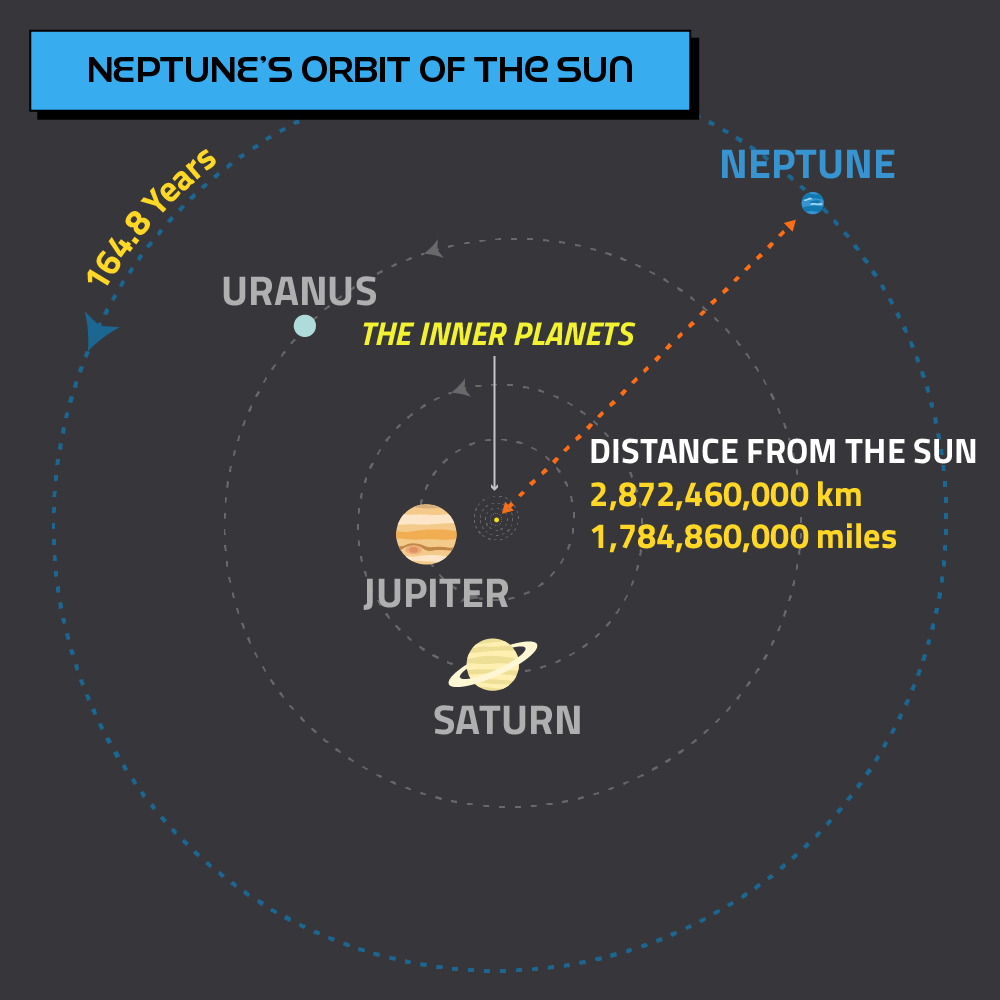
Neptune is the fourth largest planet in the Solar System. It is one of the outer planets which are all large worlds made up mostly of gases. The other outer planets are Jupiter, Saturn and Uranus. Neptune is the smallest of the outer planets.
Neptune's width across its equator, or diameter, is 49,244 km (30,599 miles). It is slightly smaller than its neighbour Uranus, but almost four times larger than Earth.
If you wanted to travel all the way around the circumference of Neptune, you would need to complete a journey of 155,600 kilometres (96,685 miles)
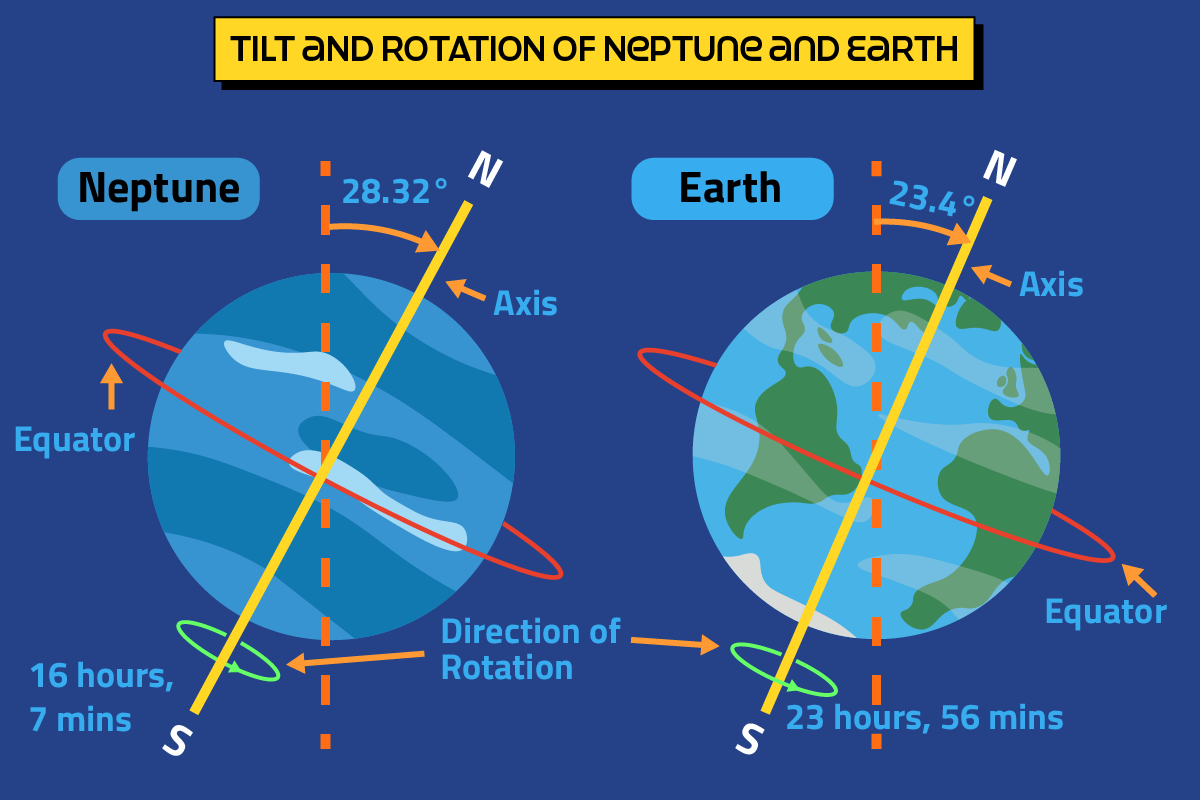
Each planet in the Solar System rotates around an axis. An axis is like an invisible stick running through the centre of the planet from top to bottom - or bottom to top if you prefer! The top of a planet's axis is its north pole, the bottom is its south pole.
Neptune spins once on its axis every 16 hours and 7 minutes. A day on a planet is considered to be the length of time it takes for it to complete one full rotation. This means that a day on Neptune is shorter than a day on Earth as Earth takes just under 24 hours to rotate.
Each planet in the Solar System is also tilted on its axis. One exception is Mercury which stands up almost straight. Neptune is slightly more tilted than Earth, leaning about 28.3 degrees compared to Earth's tilt of 23.4 degrees. The tilt of a planet is what causes seasons. Seasons on Neptune won't be anything like on Earth but scientists have observed that the planet brightens up in the areas angled towards the Sun, where they would be experiencing a Neptune summer. Currently this would be Neptune's southern hemisphere. Just like on Earth, if it's summer in the southern hemisphere, it's winter in the northern hemisphere. One key difference is that, because Neptune takes so long to get around the Sun, a season there would last about 40 years, rather than the 3 months they last for on Earth.






